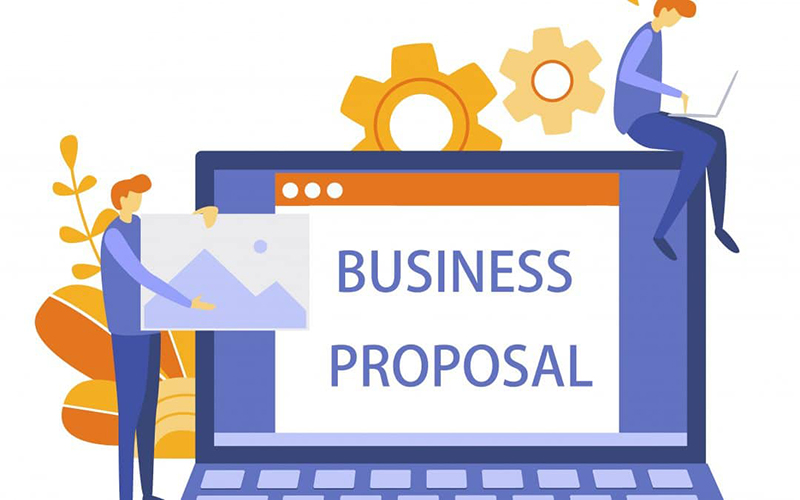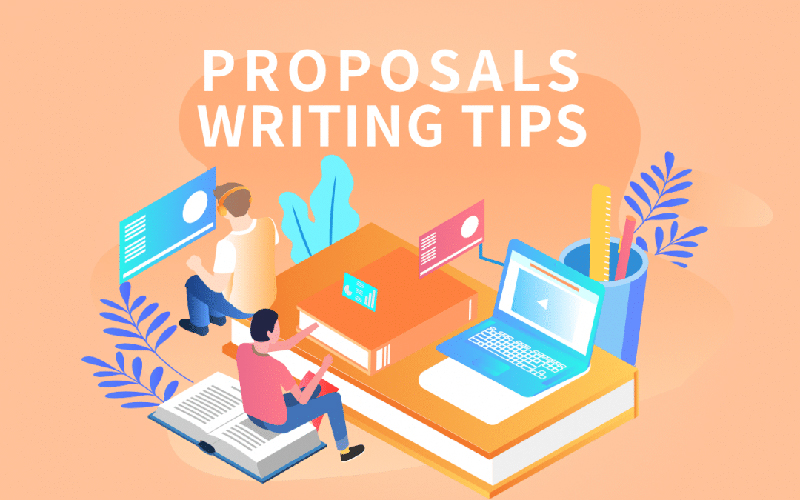A proposal is a written offer of products or services made by a vendor to a consumer. High-quality proposals can attract customers, boost sales, win big clients, and help you build your company’s identity. As a result, knowing how to write a proposal is critical if you want to expand your business.
A. What Is A Proposal?
Wallace and Van Fleet remind us in their book “Knowledge Into Action” that “a proposal is a form of persuasive writing; every element of every proposal should be structured and tailored to maximize its persuasive impact.”
You will hear many different proposals such as general proposals, business proposals, sales proposals, marketing proposals, ideas proposals, book proposals, and many more. However, in general they will be divided into 2 groups.
First group, a proposal is a document in business and technical writing that offers a solution to a problem or a course of action in response to a need.
Second group, a proposal, on the other hand, is a report in academic writing that identifies the subject of a forthcoming research project, outlines a research strategy, and provides a bibliography or preliminary list of references. This form is also known as a topic proposal.
The second type is often used for students, masters and PhD students. Therefore, in the framework of this article, we will guide you in detail on how to make the first type of proposal – proposal for businesses to convince and win deals with their customers.

What is a proposal and How to write a best proposal?
B. Winning Business Proposal Writing Guide
1. What is a business proposal?
A business proposal is designed to entice potential customers to buy what a company has to offer.
It’s a document, either digital or printed, that explains product or service features while taking the lead’s needs and desires into account. In other words, business proposals demonstrate how a company can assist a customer in resolving a specific problem.
2. Types of business proposals
There are two types of business proposals: Unsolicited and solicited business proposals
- Unsolicited Business Proposals: In order to gain a potential customer’s business, you approach them with a proposal even if they haven’t requested one.
- Solicited Business Proposals: When a company has a problem that needs to be solved, it invites other companies to submit proposals outlining how they would solve it. That’s called a request for proposal (RFP). You will then perform a Solicited Business Proposal so that the client can decide whether or not to do business with your company.

Learn and distinguish different types of business proposals
3. When do companies submit proposals?
Businesses develop and submit proposals in three ways: in response to formal RFPs, in response to an informal request, and in response to unsolicited proposals.
a) Formal RFPs (Formal Solicited Proposals)
For newcomers, the formal RFP process can be very overwhelming and intimidating. During this process, a company or organization issues an official Request for Proposal (RFP) inviting businesses to submit proposals for the opportunity.
This is to receive the grant in the case of grants or to win a contract for selling the products or services in the case of for-profit opportunities.
When responding to RFPs, there are usually several companies responding and strict submission and evaluation requirements.
b) Informal request (Informal Solicited Proposals)
Informal proposals are generated when a company is not required to submit an RFP. These are frequently smaller projects (under $100,000) that are not necessarily competitive.
For example, you may be having a sales conversation with a potential client who requests that you send them a proposal for what you can do.
They may or may not be evaluating other companies at this point, and the requirements will be less stringent because it is not a full formal RFP process.
c) Unsolicited proposals
Unsolicited proposals are those that are sent without a request, such as a formal RFP or an informal request.
If your company has an idea or solution that may be of assistance to the potential client, you could send a proposal for your work along with a brief description of what you do.
4. How To Write A Proposal?
The act of creating a written pitch on a specific subject is known as proposal writing. A good proposal requires careful planning, an understanding of your audience, and creative writing to persuade the reader.
It is critical that you understand the company before writing your business proposal. If they’ve sent you an RFP, make sure you read it thoroughly so you understand exactly what they’re looking for.
An initial call or meeting with the new client can also be beneficial to ensure you fully understand the problem they’re attempting to solve and their objectives.
After you’ve completed your research, you can start writing your business proposal. There is no one-size-fits-all approach to writing a business proposal, but let’s look at some common elements.

How to write a standard proposal in business
1. Begin by creating a title page.
You must convey some fundamental information here. Introduce yourself and your company. Include your name, the name of your company, the date you submitted the proposal, and the name of the client or individual to whom you’re submitting the proposal.
Your title page should strike a balance between engagement and professionalism. It sets the tone, so make sure yours is sleek, aesthetically pleasing, and not too “out there.”
2. Make a table of contents.
A good user experience is valuable in almost any context, and business proposals are no exception. You must make things as simple and accessible to the people on the other side of your proposal as possible. The table of contents is the first step.
A table of contents will inform your potential client about the topics covered in the business proposal. If you’re sending your proposal electronically, include a clickable table of contents that will take you to the various sections of your proposal for easy reading and navigation.
3. Provide an executive summary to explain your “why.”
The executive summary explains why you’re submitting the proposal and why your solution is the best fit for the prospective client. Specificity is essential in this case. What makes you the best choice for them?
Your executive summary, like a value proposition, outlines the benefits of your company’s products or services and how they can solve your potential client’s problem.
Even if they don’t read the entire proposal, the prospect should have a good idea of how you can help them after reading your executive summary.
4. Describe the issue or requirement.
This is where you summarize the issue affecting the potential client. It allows you to demonstrate that you understand their needs and the problem they need assistance with.
Here, research, critical thinking, and extra thought are essential. Examine the specific issues that your client is experiencing and how you can assist in resolving them. Then, persuasively frame them in a way that prepares you for the next step.
5. Offer a solution.
This is where you propose a solution to the problem. This step, like the previous one, requires a focus on specificity and personalization. Make sure your proposed solution is tailored to the client’s requirements, so they know you made this proposal just for them.
Tell them what deliverables you’ll provide, how you’ll provide them, and when they can expect them.
6. Explain your credentials.
Are you qualified to address this prospect’s issue? Why should they believe you? Use this section of your business proposal template to explain why you’re the best candidate for the job.
Include case studies of client success stories, as well as mention of any relevant awards or accreditations, to increase your authority.
7. Offer pricing options
Pricing can be tricky because you don’t want to under- or over-price your product. Include an optional fee table if you want to give the prospect a few pricing options based on their budget.
Some proposal software includes responsive pricing tables, which allow clients to select the products or services they want and the price will adjust automatically.
8. Conclude with a summary.
After providing the preceding information, it is necessary to condense it into a single final section. Summarize the proposal briefly. Discuss your qualifications and why you’d be the best choice. Confirm your availability to start a conversation.
The goal at the end of the proposal is to have the client ready to work with you. Give them your contact information so they can easily follow up.
9. Make your terms and conditions clear.
This is where you get specific about the project’s timeline, pricing, and payment schedules. It’s essentially a summary of what you and the client agree to if your proposal is accepted.
Before sending the proposal to the client, double-check the terms and conditions with your own legal team.
10. Include a signature area to document agreement.
Include a signature box for the client to sign, and make sure they understand what they’re signing. This is also an opportunity to include a prompt for the prospect to contact you if they have any unanswered questions that you can answer.
C. Standard Business Proposal Template For Your Reference
Let’s create the next big thing together!
Coming together is a beginning. Keeping together is progress. Working together is success.



















